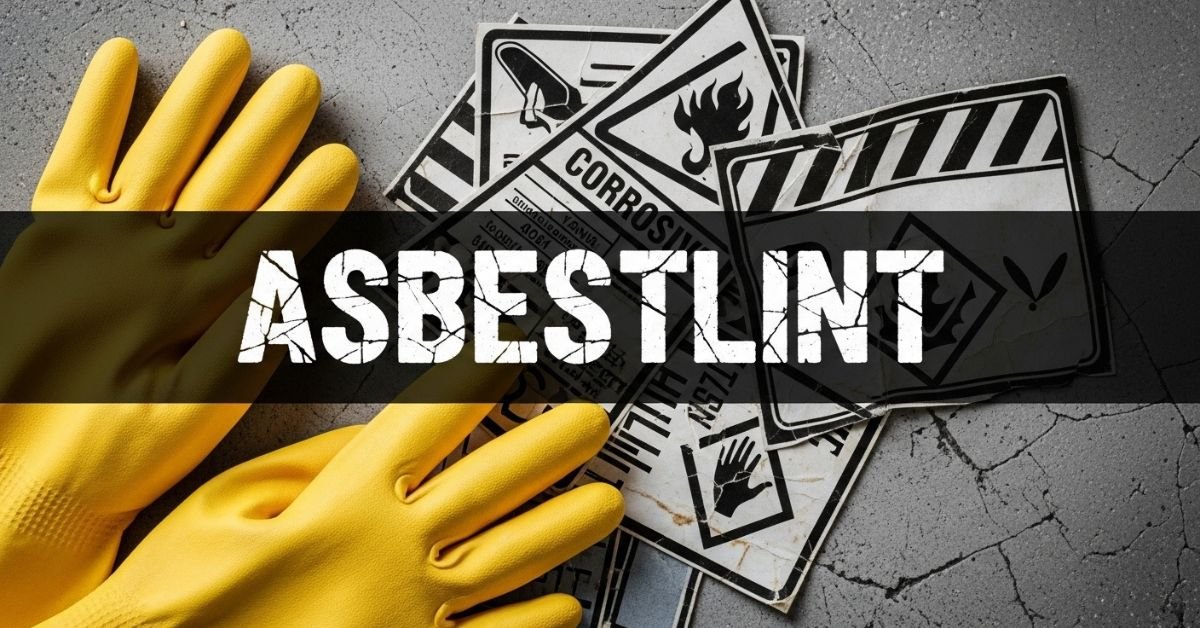Asbestos is a term that often brings to mind health hazards and strict regulations, and asbestlint is a word closely tied to this hazardous mineral. If you’ve come across this term and wonder what exactly it means, why it matters, and how to handle it safely, you’re in the right place. This article will break down everything you need to know about asbestlint—its nature, risks, and best safety practices—helping you make informed decisions.
What Is Asbestlint?
Asbestlint refers to fine, fibrous particles or dust derived from asbestos materials. Unlike intact asbestos products, which are usually bound in cement or fabric, asbestlint is the loose, airborne fiber form that poses a greater health risk when inhaled. These tiny fibers can become suspended in the air and easily inhaled, leading to serious respiratory problems.
Origins and Composition of Asbestlint
Asbestlint originates from the breakdown or deterioration of asbestos-containing materials (ACMs). Long, thin fibrous crystals make up the naturally occurring mineral asbestos, which has long been valued for its insulating and heat-resistant qualities. Over time, wear and tear, friction, or mechanical damage to ACMs like insulation, roofing, or fireproofing materials cause them to release asbestos fibers — often referred to as asbestlint.
Why Is Asbestlint Dangerous?
The minuscule size of asbestos fibres is the source of the risk. Once airborne, they can be easily inhaled and become trapped in lung tissue. This leads to inflammation, scarring, and severe diseases such as asbestosis, lung cancer, and mesothelioma—a rare cancer almost exclusively linked to asbestos exposure.
Asbestlint fibres are especially dangerous because, in contrast to larger asbestos particles, they can enter the lungs deeply.
Common Places Where Asbestlint Is Found
Asbestlint typically emerges in older buildings where asbestos materials were used extensively, including:
- Insulation around pipes and boilers
- Roofing and siding shingles
- Floor tiles and adhesives
- Fireproofing spray coatings
- Textured ceiling materials
- Brake linings and automotive parts
Any disturbance or damage to these materials can release asbestlint into the environment.
How to Identify Asbestlint
Identifying asbestlint visually is challenging due to its fine, dust-like nature. However, signs that it may be present include:
- Presence of old, crumbling insulation or ceiling tiles
- Dust or powdery residue near asbestos-containing materials
- Visible damage or wear in areas known for asbestos use
Professional testing is the only reliable way to confirm the presence of asbestlint.
Health Risks Associated with Exposure
Exposure to asbestlint can cause serious health problems, often developing decades after initial contact. These include:
- Asbestosis: Lung scarring causing breathlessness
- Mesothelioma: Cancer of the lining of lungs or abdomen
- Lung cancer: Particularly among smokers with asbestos exposure
- Pleural thickening: Lung lining inflammation
The risk increases with prolonged or high-level exposure to asbestlint fibers.
Safe Handling and Disposal of Asbestlint
Because of the health risks, handling asbestlint requires strict safety measures:
- Avoid disturbing asbestos materials to prevent fiber release
- Use personal protective equipment (PPE), including respirators and disposable clothing
- Wetting asbestos materials before removal to reduce dust
- Sealing asbestos waste in airtight, labeled containers
- Use approved hazardous waste facilities to dispose of asbestos trash.
Serious pollution and health risks might result from improper handling.
Legal Regulations and Guidelines
Many countries have strict laws regulating asbestos and asbestlint due to their health risks. These include:
- Mandatory asbestos surveys in older buildings
- Licensing for asbestos removal professionals
- Clear guidelines for asbestos waste disposal
- Occupational exposure limits for workers
Following local laws is essential to maintaining safety and avoiding fines.
Professional Asbestos Testing and Removal
If you suspect the presence of asbestlint, hiring certified asbestos professionals is the safest course. They have specialized equipment and expertise to:
- Conduct air quality and material sampling
- Analyze samples in accredited labs
- Safely remove and dispose of asbestos materials
- Ensure the site is free from contamination post-removal
DIY asbestos removal is strongly discouraged due to the severe risks involved.
FAQs About Asbestlint
Q1: Can asbestlint be cleaned up safely at home?
No, handling asbestlint requires professional training and equipment. Improper cleanup can increase fiber release.
Q2: How long does asbestos-related disease take to develop?
Symptoms often appear 10–40 years after exposure, which makes early detection difficult.
Q3: Is asbestlint only dangerous if inhaled?
Yes, the primary risk is inhalation. Asbestos fibers in dust form can penetrate deep into lungs.
Q4: What should I do if I find damaged asbestos materials?
Do not touch or disturb them. Contact a licensed asbestos professional for assessment.
Q5: Are all asbestos-containing materials hazardous?
Intact, undisturbed asbestos materials generally do not pose immediate risks; the danger arises when fibers become airborne as asbestlint.
Final Thoughts
Understanding what is asbestlint and the risks it poses is essential for anyone dealing with older buildings or industrial materials. While asbestos once seemed like a miracle mineral, its dangerous fibers—especially when loose as asbestlint—require careful respect and professional handling. Prioritizing safety, compliance with regulations, and consulting experts are the best ways to protect yourself and your loved ones from the long-term hazards of asbestos exposure.
Stay informed, stay cautious, and never underestimate the hidden risks of asbestlint.
